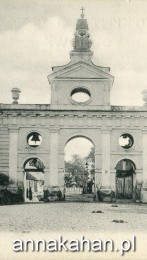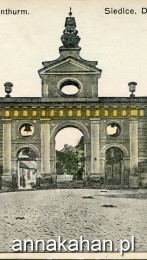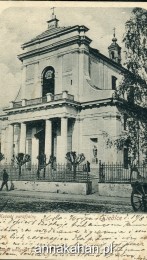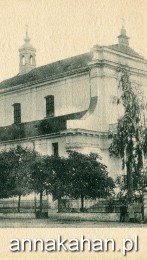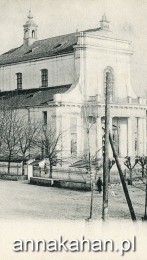[The Gate – The Bell Tower]
For almost two centuries, the bell tower was one of the main symbols of the city. In Anna Kahan’s time and later, it was the beginning of a walking route called “from the bell tower to the God’s house”. Here people arranged meetings and from here went for a walk, to the park, for ice cream. In the walls of the gate there are commemorative plaques dedicated to the Polish heroes, an insurgent of 1863, priest Stanisław Brzóska, and the Lviv Eaglets.
The bell tower was built between 1773 and 1775 in the times of Prince Michał Fryderyk Czartoryski, the owner of Siedlce. In 1783, when King August Poniatowski was visiting the city, the bell tower served as a triumphal arch. It was also used as a city gate. It was located on the border of the city and Stara Wieś.
The side wings of the bell tower were intended for servants of the church. In later years, they were converted into a prison (northern) and the Registrar’s Office at the Church of Saint Stanislaus (southern).
During the First World War, the Siedlce City Council, which operated from autumn 1915 to the end of 1916, decided to name the bell tower “the Duchess Ogiński gate”.
In the interwar period, the gate was deemed the most worthy for plaques commemorating important events. For some time, priest Stanisław Brzóska was hiding in the southern part of the bell tower. On February 22, 1922, a plaque in honour of this hero was set into the northern pillar of the tower.
The gate ceased to exist as a whole in May 1941. Before the invasion on the Soviet Union, the Germans demolished the central part of the gate because it was too narrow for the tanks.
The Regional Museum in Siedlce has a unique collection of photographs from the successive stages of the demolition, which show the construction details of the gate.


